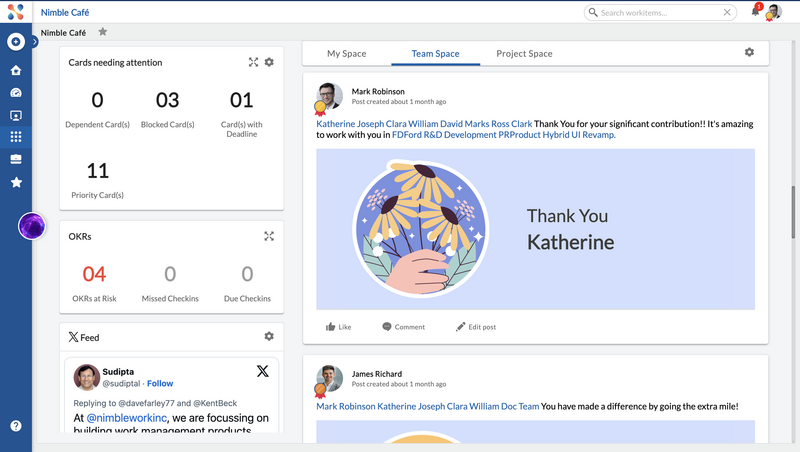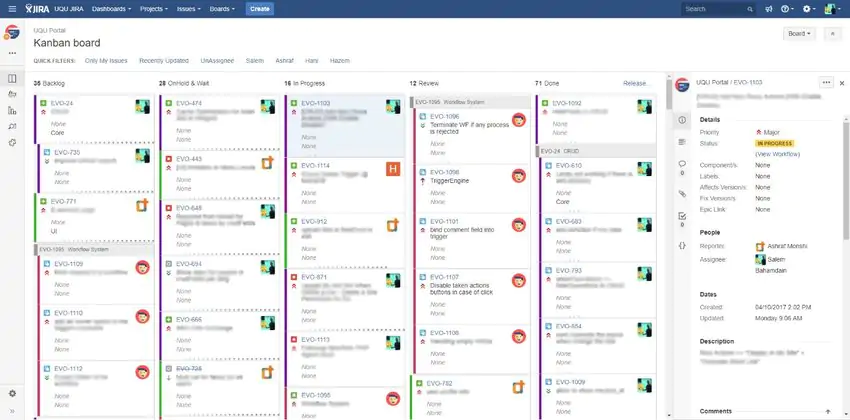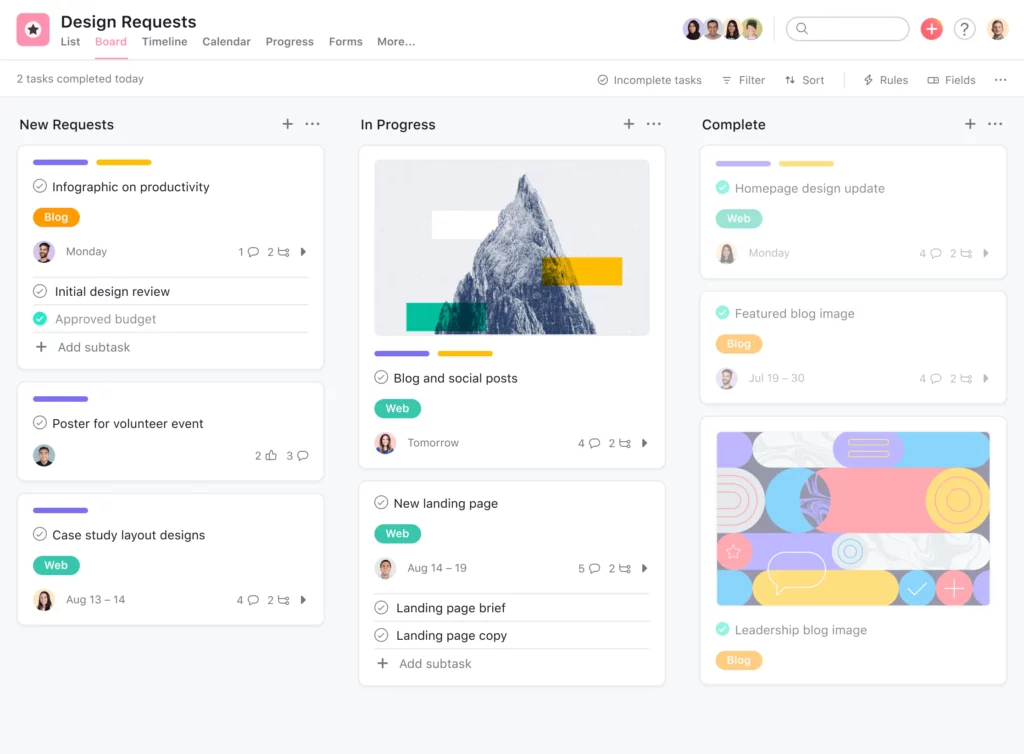In today’s fast-paced business landscape, effective project management hinges on seamless collaboration and open communication among team members. As projects grow increasingly complex, with diverse stakeholders and geographically dispersed teams, the need for robust collaborative software solutions has become paramount. These cutting-edge tools transcend traditional methods, fostering an environment where teams can effortlessly share information, coordinate tasks, and work together in real time, regardless of physical boundaries.
Collaboration software revolutionizes the way projects are managed by providing a centralized platform that serves as a virtual command center. Imagine a digital workspace where every team member has a clear understanding of project goals, task assignments, and progress updates, all accessible with a few clicks. This level of transparency and accessibility not only enhances productivity but also promotes accountability and fosters a culture of trust and open communication.
Beyond facilitating seamless information sharing, these powerful tools offer a suite of features designed to streamline project workflows. From task management and deadline tracking to real-time communication channels and advanced reporting capabilities, collaboration software equips teams with the tools they need to navigate even the most intricate projects with ease, staying aligned and focused on their objectives every step of the way.
Why do we need a Collaborative Software?
Collaborative software plays a crucial role in project management for several reasons:
1. Team Coordination: Project management involves multiple team members working together towards a common goal. Collaborative software provides a centralized platform where team members can communicate, share updates, and coordinate their efforts in real time.
2. Task Assignment and Tracking: Project managers can use collaborative software to assign tasks to team members, set deadlines, and track progress. This ensures that everyone knows what they need to do and by when reducing the risk of tasks falling through the cracks.
3. Resource Management: Collaborative software helps project managers allocate resources effectively by providing visibility into team availability, workload, and skills. This enables them to assign tasks to the right people based on their capacity and expertise.
4. Document and File Sharing: Projects involve a lot of documentation, including plans, reports, and deliverables. Collaborative software allows team members to share and collaborate on documents in a centralized location, reducing version control issues and ensuring everyone has access to the latest information.
5. Real-Time Communication: Effective communication is essential for successful project management. Collaborative software provides various communication tools such as chat, video conferencing, and discussion forums, enabling team members to communicate in real-time regardless of their location.
6. Transparency and Accountability: By using collaborative software, project managers can create transparency around project progress, timelines, and responsibilities. This fosters accountability among team members and encourages them to take ownership of their tasks.
7. Risk Management: Collaborative software can help identify and mitigate project risks by providing visibility into potential issues and enabling proactive problem-solving. Team members can raise concerns, suggest solutions, and collaborate on risk mitigation strategies within the platform.
Overall, collaborative software enhances efficiency, productivity, and collaboration in project management by providing tools and features tailored to the needs of project teams. It streamlines communication, simplifies task management, and improves transparency, ultimately leading to more successful project outcomes.
Power of Collaborative Software in Streamlining Project Management
Collaborative software revolutionizes project management by fostering seamless teamwork and communication. With centralized platforms like Nimble, teams can coordinate tasks, allocate resources, and track progress in real-time. Instant messaging and video conferencing tools such as Slack or Zoom enable swift communication, breaking down geographical barriers. Document sharing and version control feature ensure everyone works from the same page, mitigating errors and confusion. By automating routine tasks and providing analytics for insights, collaborative software optimizes workflows and boosts efficiency. Ultimately, these tools empower project managers to navigate complexity with ease, delivering projects on time and within budget.
Top 7 Collaboration Software
1. Nimble
Nimble stands out as a superior collaborative software solution, designed to revolutionize the way teams approach project management. With its intuitive and feature-rich platform, Nimble seamlessly integrates all the essential tools required for efficient collaboration, communication, and project execution.
One of Nimble’s standout features is its robust task management capabilities, which allow teams to easily create, assign, and track tasks across multiple projects. The platform’s visual project boards provide a clear overview of task statuses, dependencies, and deadlines, ensuring that everyone stays aligned and focused on their priorities. Additionally, Nimble’s built-in communication channels, including instant chat and messaging, facilitate real-time collaboration, enabling teams to quickly resolve issues, share updates, and make informed decisions.
Moreover, Nimble excels in fostering transparency and accountability within teams. Its advanced reporting and analytics capabilities offer valuable insights into project performance, resource utilization, and potential bottlenecks. Project managers can leverage these data-driven insights to make informed decisions, optimize resource allocation, and proactively mitigate risks, ensuring projects stay on track and within budget.
With its seamless integration capabilities, Nimble allows teams to connect with other essential tools and platforms, streamlining workflows and eliminating the need for constant context-switching. Whether it’s integrating with popular project management methodologies like Agile or Waterfall, or seamlessly collaborating with external stakeholders and clients, Nimble provides a centralized hub for efficient project execution.
Nimble offers a FREE Trial and paid plans start from $10 per user per month.
• Nimble goes beyond simple communication by providing context around interactions. When collaborating on tasks or projects related to a specific client, Nimble surfaces all relevant email threads, social media posts, and contact information within the same view.
• Team members can access relevant conversations, social media interactions, and contact details directly within Nimble, fostering collaboration and a better understanding of client relationships.
2. Slack
Slack has organized channels dedicated to specific projects, topics, or teams. Here, file sharing, real-time discussions, and instant updates keep everyone informed. No more chasing emails for the latest info. Slack integrates with your favorite tools, streamlining workflows and bringing everything you need into one central hub. This fosters transparency, faster decision-making, and a more connected work environment – even for remote teams.
Pros:
• Slack excels in fostering quick and transparent communication.
• Slack’s informal nature can foster a more positive and engaging team culture. Casual conversations, sharing channels, and integrations with fun tools can boost morale and team spirit.
Cons:
• Slack’s real-time nature can be a double-edged sword. While fostering communication, constant notifications and a fast-paced flow of messages can be overwhelming.
• Rapid-fire communication in Slack channels can make it challenging to track conversations and find specific information later.
Pricing: $8.75 USD per active user per month, billed monthly.
3. Jira
Jira goes beyond traditional project management, positioning itself as a collaboration powerhouse. It enables teams to effortlessly track tasks, engage in real-time discussions, and foster a sense of shared ownership. By minimizing the need for lengthy email exchanges, Jira promotes efficient communication through features like comments, mentions, and mobile access.
Pros:
• Teams can collaborate on complex issues by breaking down tasks and sharing ownership.
• Team members can collaborate directly within the context of the work, eliminating the need for scattered communication channels like email.
Cons:
• Complex workflows and a steep learning curve can hinder initial adoption and slow down collaboration until teams become familiar with the platform.
• While comments and mentions exist, Jira lacks dedicated chat or real-time discussion features often found in collaboration tools.
Pricing: $7.16 USD per user, per month.
4. Asana
Asana keeps teamwork flowing. It ditches email chaos for a central hub where teams assign tasks, track progress, and share files. Discussions live alongside tasks, eliminating confusion. Crystal-clear deadlines and clear assignees keep everyone accountable. Asana brings focus and transparency, making teamwork a breeze.
Pros:
• Asana replaces email chaos with a central platform. Teams can assign tasks, track progress, share files, and discuss everything in one place
• Progress is visible to all, Asana fosters accountability and keeps projects on track.
Cons:
• Asana restricts assigning tasks to only one person at a time.
• Asana lacks built-in time-tracking features. This can be a disadvantage for teams needing to track billable hours or monitor project timelines.
Pricing: $10.99 USD per user, per month.
5. Google Workspace
Google Workspace is designed to enhance collaboration among teams, allowing them to work together seamlessly and efficiently. With tools like Google Docs, Sheets, and Slides, teams can collaborate on a single source of truth, with version history available for easy tracking. Additionally, Google Chat facilitates communication and file sharing, enabling hybrid teams to collaborate and stay connected from anywhere.
Pros:
• Multiple users can edit Docs, Sheets, and Slides simultaneously, seeing changes instantly.
• Workspace integrates seamlessly with Gmail, Calendar, and other Google tools you already use.
Cons:
• Google Workspace lacks advanced project management features and functionalities found in dedicated project management collaboration tools.
• It may not be suitable for managing complex projects with extensive task dependencies and resource allocation.
Pricing: $9.99 USD per user, per month.
6. Airtable
Airtable is a flexible collaboration tool that transforms into databases, kanban boards, calendars, and more – all in one platform. Imagine a single platform where teams can track projects, manage tasks, and brainstorm ideas, all tailored to their specific needs. Airtable keeps teams organized, focused, and working together creatively.
Pros:
• Team members can collaborate in real time, updating tasks, adding comments, and sharing files directly within the workspace.
• Airtable lets you design your workspace to perfectly fit your team’s needs. You can create custom views like calendars, kanban boards, or detailed databases, all within a single platform. This flexibility empowers teams to collaborate in the way that works best for them.
Cons:
• For teams new to the platform, setting up complex project structures or automation might require some effort and initial training.
• If your team relies heavily on in-depth data analysis or complex visualizations, Airtable might require integration with additional reporting tools.
Pricing: $20 USD per user, per month.
7. TeamWork
Teamwork goes beyond the concept of teamwork, offering a software suite specifically designed for project management in client-centric businesses. This all-in-one platform streamlines communication and collaboration with clients. Teamwork empowers you to manage tasks, deadlines, and resources, visualize progress, and gain valuable insights through reporting tools.
Pros:
• Teamwork excels at keeping everyone on the same page. Share files, receive feedback, and manage projects directly with clients within the platform, fostering smooth communication.
• Visualize progress with Gantt charts and Kanban boards. Utilize comprehensive reporting tools to gain valuable insights into project performance and team productivity, allowing for informed decision-making.
Cons
• Teamwork might not be ideal for very complex projects or large, interconnected teams. Its functionalities may not cater to the needs of extensive account management or intricate budget oversight.
• While generally user-friendly, some users find the interface cluttered with options, leading to a potential learning curve for new team members.
Pricing: $9.99 USD per user, per month.
Summary
In conclusion, collaborative software has become an essential tool in today’s digital workplace, revolutionizing the way teams work together. By centralizing tasks, files, and communication, it enables real-time visibility, fosters seamless collaboration, and ultimately drives productivity. If you’re looking for the best collaboration software, consider exploring Nimble. With its user-friendly interface, robust features, and intuitive design, Nimble can empower your team to collaborate effectively and efficiently. Take your teamwork to the next level with Nimble, the ultimate choice for streamlined collaboration. Get a free trial here.













